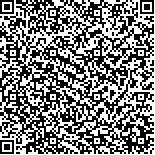下载中心
优秀审稿专家
优秀论文
相关链接
摘要

基于卫星数据的热红外图像模拟可以为热红外大气校正、地表温度和发射率反演和前期验证提供数据支撑,同时也可以为热红外传感器的波段设置和优化提供参考。热红外图像模拟是进行热红外定量遥感研究的有效手段。本研究利用Terra星上搭载的ASTER(Advanced Spaceborne Thermal Emission and Reflection Radiometer)遥感数据所反演得到的地表温度和发射率产品,基于高光谱辐射传输模型,模拟8—14 μm(714—1250 cm-1),波谱分辨率为0.25 cm-1的星上TOA(Top of Atmosphere)高光谱热红外成像模拟数据。在此基础上,结合高光谱热红外图像数据的特点,实现了温度和发射率分离算法,以及对比了不同的基于图像的大气校正算法。结果显示,本文提出的热红外图像模拟方法可行,能够为评价不同的大气校正、温度和发射率分离算法提供有效的数据支撑。
Hyperspectral thermal infrared image simulation provides potential application in military, scientific, and commercial fields, such as target detection, atmospheric correction, Land Surface Temperature (LST) and emissivity (LSE) separation and validation, and future satellite sensor bandwidth/resolution setup and optimization. Therefore, thermal infrared image simulation is an effective means for quantitative remote sensing research. In this paper, we simulated the Top of Atmosphere (TOA) hyperspectral thermal infrared radiation data with a spectral resolution of 0.25 cm-1, ranging from 8—14 μm (714—1250 cm-1), using ASTER (Advanced Spaceborne Thermal Emission and Reflection Radiometer) land surface temperature (AST08), land surface emissivity (AST05) product and the Seebor V5.0 atmospheric profiles. The surface hyperspectral emissivity is obtained from ASTER multi-spectral emissivity data using the principal component regression, while the various atmospheric parameters are obtained using the hyperspectral atmospheric radiative transfer model 4A/OP (operational release for automatized atmospheric absorption atlas) with the Seebor V5.0 atmospheric profile. At-nadir observations are considered in the simulations in this study. Finally, based on the above-mentioned simulation method of thermal infrared hyperspectral data, and further considering the influence of instrument observation error and other factors, two atmospheric correction algorithms based on image information, namely AAC algorithm (Autonomous Atmospheric Compensation) and combined ISAC (In Scene Atmospheric Correction) and AAC algorithm, and Iterative Spectrally Smooth Temperature Emissivity Separation (ISSTES) algorithm were evaluated respectively. And we also analyze the sensitivity of these methods to different noise levels and other error sources. The results show that the ISSTES temperature and emissivity separation algorithm is reliable and feasible when the accuracy of the atmospheric profile is relatively high, but when instrument noises and errors in the atmospheric profile are considered, the accuracy of ISSTES algorithm decreases. In the absence of instrument noise, the accuracy of AAC and ISAC-AAC atmospheric correction methods is close and can obtain high-precision atmospheric parameters of atmospheric transmittance, atmospheric downward radiation and atmospheric upwelling radiation, which are required in the atmospheric radiative transfer equation. When 1 K instrument noise is added, the accuracy of ISAC-AAC is significantly higher than that of AAC. And under the same instrument noise, with the increase of water vapor content, the accuracy of AAC algorithm decreases rapidly, while the accuracy of ISAC-AAC does not decrease significantly. The above evaluation results are consistent with the previous evaluation results based on the measured data. In general, the thermal infrared image simulation method proposed in this paper is feasible and can provide effective data for evaluating different atmospheric correction algorithms and temperature and emissivity separation algorithms.

